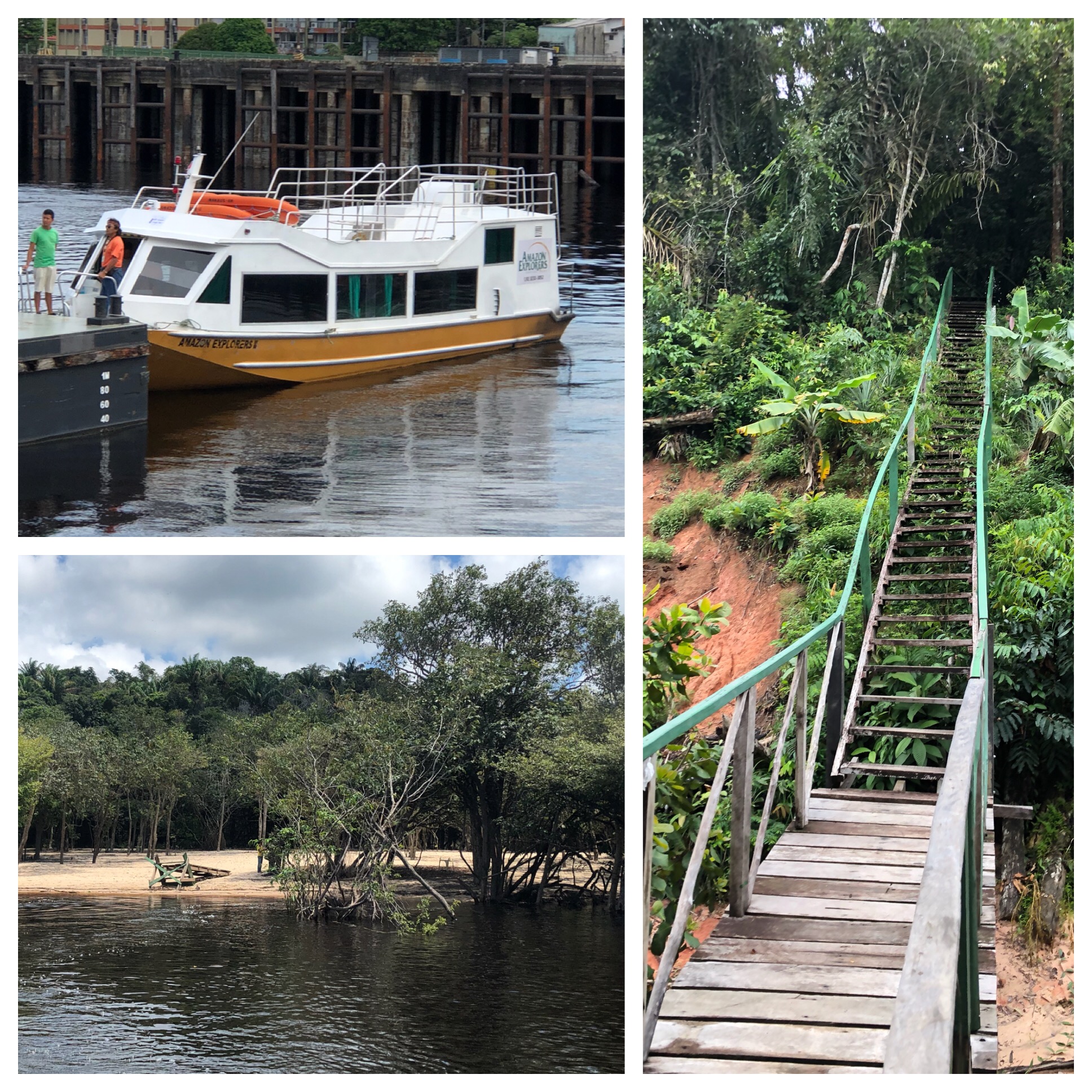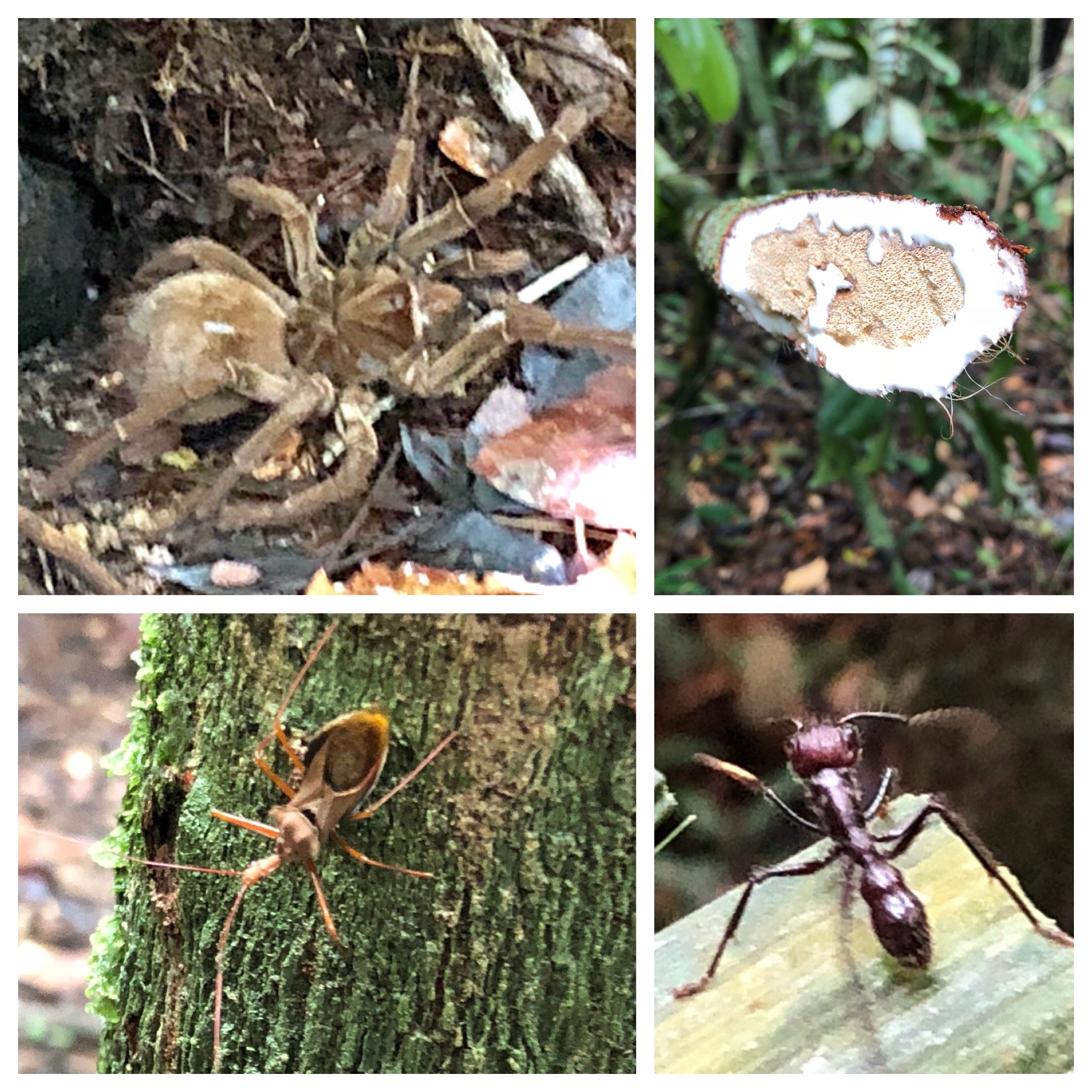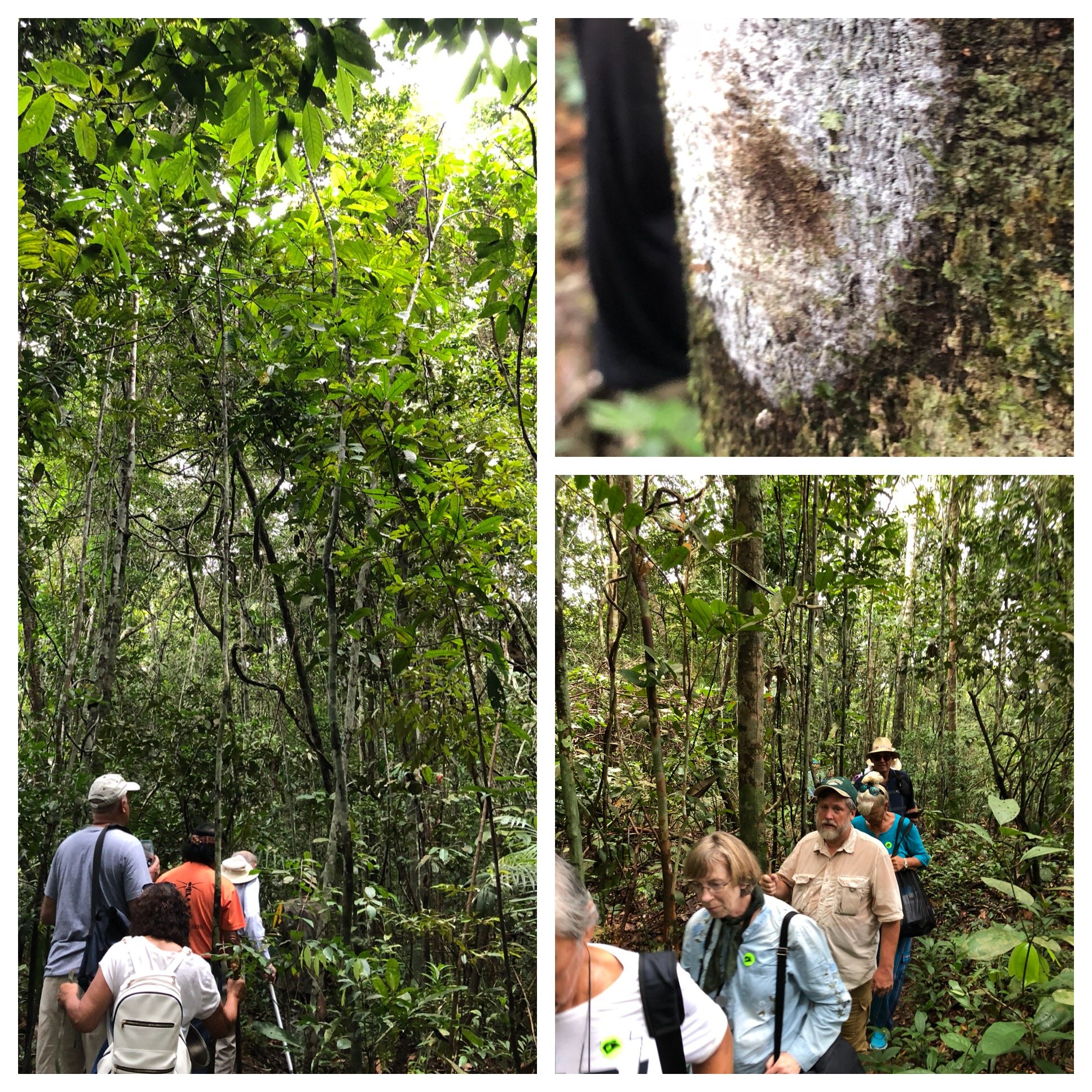Today’s excursion is a jungle trek. Typically, we meet in the ship’s showroom and when our tour is ready, we board a bus. Today, we boarded a boat and traveled for about 45 minutes across the river.
Manaus is located on the Rio Negro, so called, because the water looks black rather than the brown sediment-laden water of the main Amazon River. We could really see the difference in the water color as we docked on a quiet beach that borders a park owned by a group called Amazon Adventures.
After a short walk inland, we came across several simple buildings and a staircase up into the primary forest. Only 86 steps this time, no problem.

The buildings were on stilts because the water level rises and falls many feet each year. The rainy season begins in December and ends in June. We are visiting halfway through the wet season. The dark area on the trunks of trees as well as the dark area visible near the bottom of the doors of the stilted cabins show the high water level that could be reached in June. This change in water level totally affects the lives of the human inhabitants as well as the plants and animals. For example, the stilted buildings and the fact that some fish lay their eggs in the treetops during high water times.

We were guided by two people, an indigenous guide (in orange) and his sidekick, Pedro. Both men were fun and helpful. The weather for this trek was beautiful, but still warm and humid and everyone was damp with sweat. We sprayed ourselves with insect repellent when we first got off the boat, but the bugs were still rather noticeable. Our guide grew up in the jungle and come to the city when he was 14. He knew a lot about surviving in the jungle and living with nature which permeated his lectures and demonstrations for the two-hour trek.

He showed us a very innocuous-looking tree, but when he rubbed his machete on the trunk, out swarmed a colony of 1.5-inch black ants with poison stings. If you had mistakenly attached your hammock to this tree, these night-active insects would have been a terrible surprise. We saw the liana vine where the poison, curare, can be harvested. We also saw a tarantula as well as an insect that sprays a burning liquid. Nothing was attacking us, but I can see that knowing what to watch for would be vital for survival.

Continuing on our trek, we were shown a white powder that forms from the sap of one tree that can cure headaches. We tasted tea that was made from tree bark and is used to treat malaria and another more pleasant-tasting tea that smelled like cloves that was made from a liana vine and used for stomach problems. Pedro showed us a couple of ways to make fire, how to get fresh water from a different variety of liana vine, and even how to use palm leaves to make fun handicrafts such as headbands/bracelets and a cute grasshopper.

There were interesting termite nests on the sides of trees and beautiful fungi along the trails. We did not see any larger animals or birds, but they would hide when a troop of people trekked through the forest, so we were not surprised. We were shown how to create traps for various animals, however.


All in all, this was one of our favorite excursions. We saw a lot, learned a lot, but it was great to return to the air-conditioned boat for our trip back to the ship.